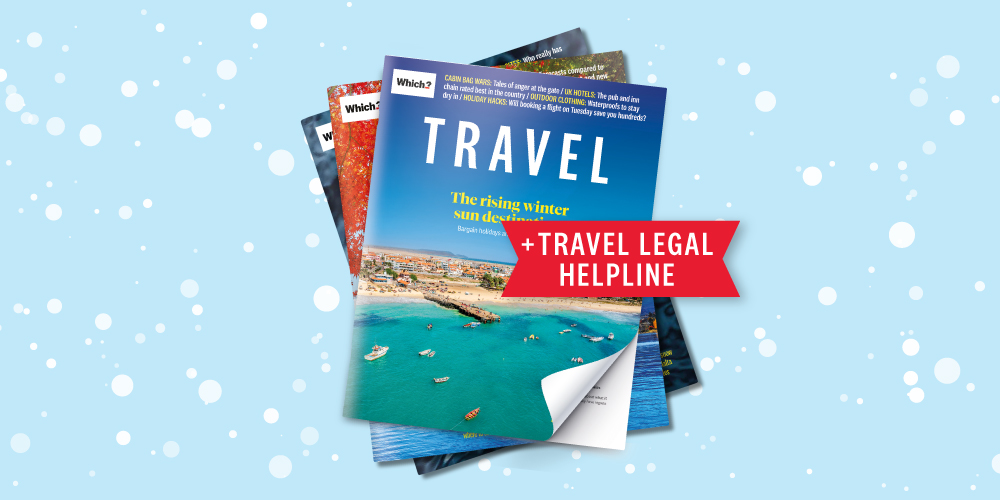
Get a year of super-useful advice
Who to book with, how to get the best deals plus inspiring destination ideas from the experts, for only £36.75 for the year – that’s 25% off.
Join Which? TravelOffer ends 8th January 2026
By clicking a retailer link you consent to third-party cookies that track your onward journey. This enables W? to receive an affiliate commission if you make a purchase, which supports our mission to be the UK's consumer champion.

In this article
Not all waterproof jackets are created equal, according to Which? members in a recent survey. Some jackets won't necessarily shelter you from the wind, prevent you from getting clammy on a long hike or keep you bone-dry in drizzle.
You’ll need to ensure that the one you choose has all the necessary technical specifications. Features that enable air to enter the jacket, such as vents and adjustable cuffs, can improve its breathability and comfort, while taped seams will prevent water from seeping in.
So whether you’re investing in new gear for your next adventure or you’re looking for a gift for an outdoorsy loved one, read on to help you select the best jacket for the job.
For more independent travel advice and recommendations, sign up to Which? Travel

Who to book with, how to get the best deals plus inspiring destination ideas from the experts, for only £36.75 for the year – that’s 25% off.
Join Which? TravelOffer ends 8th January 2026

When buying a jacket, check the tags or online description for the waterproof rating, known as the hydrostatic head. It’s measured in millimetres – the higher, the better – but a 5,000mm minimum is recommended.
Taped and sealed seams prevent water from getting in through the holes created during manufacturing. If you can see the seams, it won’t be waterproof.
A jacket with storm flaps (a piece of fabric that covers the jacket's zips) will also help keep you dry by preventing water from entering the coat via zip openings.
Choose a relatively close-fitting jacket to prevent it from flapping in the wind. However, it should be roomy enough to allow you to move freely and wear a jumper beneath.
The right-sized waterproof will also cover your lower back when you lift your arms to help keep the rain out. A drop tail (where the back of the jacket is longer than the front) is particularly useful. This feature gives you more coverage when bending forward and is particularly handy for cyclists.
Not all waterproofs do their job as well as others. See how different brands measured up against each other in our waterproof jackets survey.
Decent walking jackets will have drawstring hoods and hems – and often waistlines too – to fit more snugly and improve insulation. They will also protect you from wind and rain. Just check where the toggles will rest against your body, as they could dig in and prove uncomfortable during a long walk.
An adjustable hem and waistline lets you use the waterproof jacket's toggles to tighten the coat to improve fit and aid insulation.
Lastly, Velcro cuffs can help to keep out water and allow for ventilation in dryer conditions.

A well-fitted hood should protect your face from the elements without restricting your view. A stiffened peak will help to prevent the hood from bending in the wind and direct the rain away from your face. You should be able to adjust the hood easily, even when wearing gloves.
Fixed hoods will prevent water from running down your neck and back, as will detachable hoods with a good overlap between the hood and collar.

Who to book with, how to get the best deals plus inspiring destination ideas from the experts, for only £36.75 for the year – that’s 25% off.
Join Which? TravelOffer ends 8th January 2026
Breathability is vital if you plan to be active when wearing your jacket. Select one with a membrane (Gore-Tex is the best known). This stops rain droplets from entering but allows sweat and heat to escape. Cheaper jackets tend to have a water-repellent coating only, so they are less breathable. While that’s fine for wearing around town in the rain doing some shopping, it will fall short on a rainy hike in the Lake District.
An added bonus is underarm ventilation (pit zips). Beware that wearing a rucksack can make accessing these zips trickier and even distort the shape of the zip, increasing the chances of water entering. Ideally, take your rucksack along to the shop to try it on with the jacket.
Did you know that you shouldn't wash a waterproof jacket in regular detergent? We explain how to wash your waterproofs without ruining them.
Firstly, check there are enough pockets for your needs – and that they’re big enough. You may need just one for your phone and keys to walk the dog around the block. Serious hikers might need pockets large enough to carry an OS map and inside pockets to keep valuables dry.
When selecting a jacket, trying it on with a rucksack will also show you the pull it will have on the pocket positioning. Plus, take a pair of gloves to see how easy it is to open the jacket's pockets while wearing them.

PFAS (or PFCs) are synthetic chemicals traditionally used to make products waterproof – a job they do well. But they impact the planet by taking up to 1,000 years to decompose. Look out for PFC-free products.
Paramo, the best-rated brand in our waterproof jackets survey, guarantees all its products are PFC-free.
Find out which are the best waterproof jackets in 2025